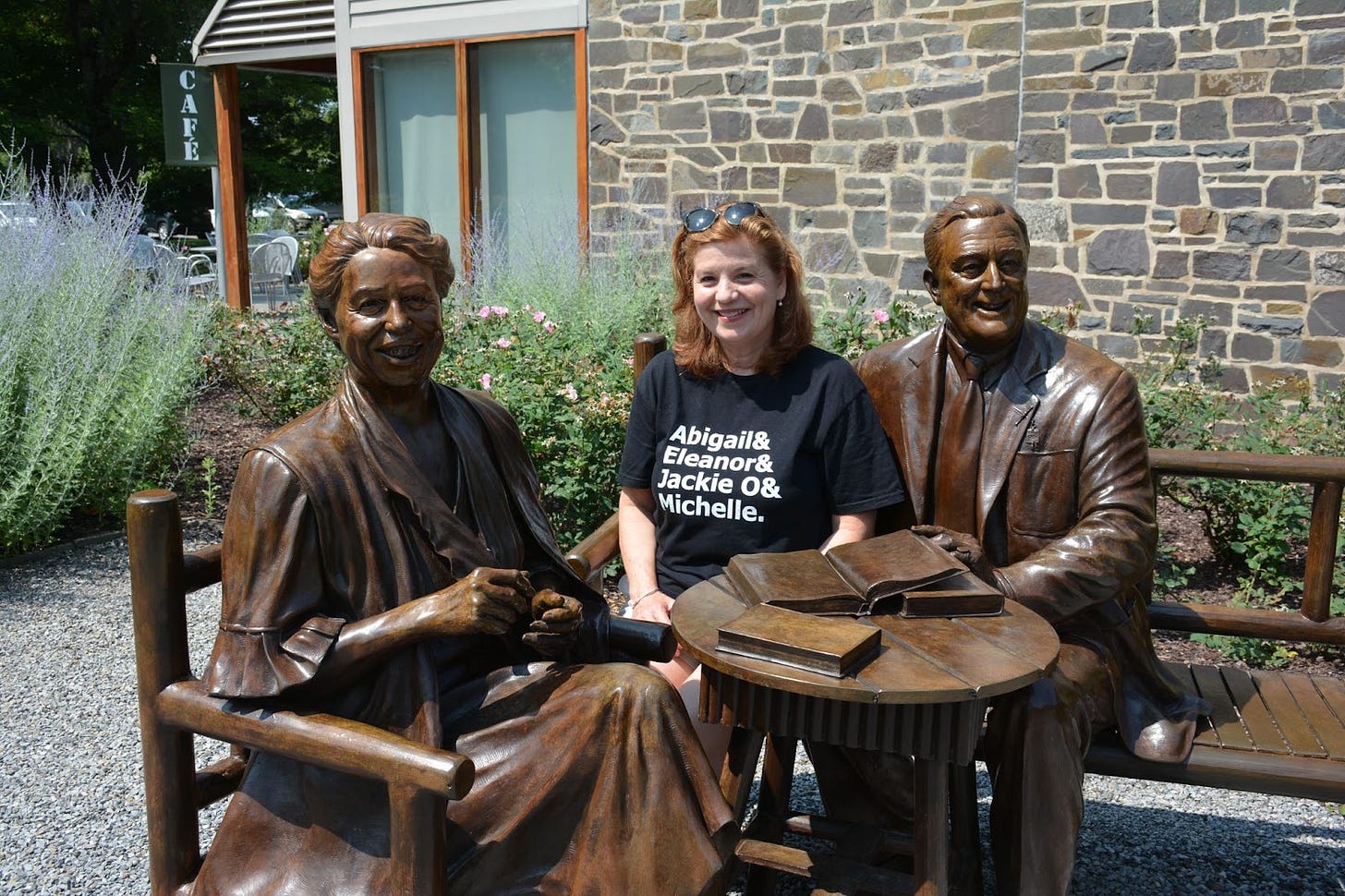Author Stitches Together First Ladies History With ‘Common Threads’
Debra Scala Giokas’ book recognizes 18 first ladies who have knitted, crocheted, embroidered, quilted, cross-stitched or sewed at one point in their lives.

It is said that former First Lady Ida McKinley (1897-1901) crocheted 4,000 slippers that were donated to charities and war veterans. It was her way of helping fulfill the role as the president’s spouse while in a fragile state of health. But for another crocheter and author Debra Scala Giokas, the history behind Ida McKinley’s crafted slippers is what ultimately hooked her into learning more about first ladies and their common threads.
Giokas is visiting the Bay Shore Historical Society in Bay Shore, New York, Thursday to present a deep dive into a lesser known hobby of America’s first ladies: knitting. Her book, Ladies, First: Common Threads, recognizes 18 first ladies who have knitted, crocheted, embroidered, quilted, cross-stitched or sewed at one point in their lives.
Giokas was appointed a Hutton House Lecturer at C.W. Post College/Long Island University and is …




